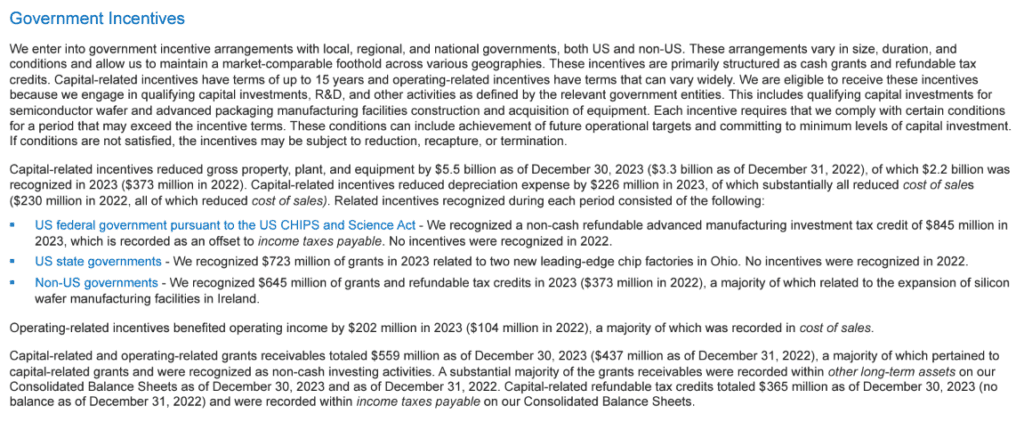As part of a big survey of economic development practices in small- and medium-sized cities, we at Good Jobs First recently came upon an exceptional story. Multiple cities and counties in Georgia and South Carolina are cooperating in the Augusta, Ga.-Aiken, S.C. metro area.
They have avoided the ruinous, wasteful “economic war among the states” that we’ve documented in numerous two- and three-state metro areas — where companies move short distances but across a state line and get showered with subsidies as “new job creators” when they have actually just changed employees’ commuting routes. In fact, this is the first functioning interstate cooperation system we have ever encountered.

President and CEO
Western SC | Economic Development Partnership and Cal Wray, President of the Development Authority of Augusta, Georgia. Contributed photo.
There is only one interstate precedent, sort of: the legally binding deal between the states of Missouri and Kansas, struck in 2019, to not use state dollars for such “interstate job fraud” in the Kansas City metro area. But that agreement doesn’t require cooperation and when Jackson County, Missouri voters recently said “NO!” to a sweetheart stadium deal for the Royals and Chiefs, the governor of Kansas said the deal wouldn’t apply to sports franchises.
To be sure, there are some intrastate cooperation precedents. Our favorites are those, both more than 30 years old, in the Denver and Dayton, Ohio metro areas. In each region, local governments cooperate on growth instead of competing for deals. They even tell on companies that signal an interest in moving around: that is, they tell the company’s incumbent community, to encourage retention if it’s possible.
So we’re delighted to bring you the story from Cal Wray, the president of the Augusta Economic Development Authority, and Will Williams, president and CEO of the Western South Carolina Economic Development Partnership. They answered our questions by email:
Q: How did this cross-border partnership begin?
A: In January 2018, when I was in transitioning jobs from Tennessee to Augusta, Will Williams and I were together in a new national economic development program called The Advanced Economic Development Leadership Program. We completed the program together and along with Robbie Bennett from Columbia County, Georgia (and Jessica Hood from Burke County).* We began to discuss how our offices could work together for the betterment of the region. With the daily flow of people between our counties for work, shopping, and medical needs it only makes sense for the communities in the MSA to support one another in daily life and in economic development. This allowed us to informally begin working together and helping each other.
*Columbia and Burke Counties, both in Georgia, adjoin the city-county of Augusta. Straddling the Savannah River, five Georgia counties and two in South Carolina make up the Augusta-Richmond County metro area.
Q: How exactly does it work? What happens if an Aiken-area company knocks on Augusta’s door or vice versa?
A: The partnership is informal and works in several ways. We travel together to site selection meetings, trade shows, state and regional association meetings, etc. We work to market the region with joint marketing items, joint meetings, and even joint project visits when companies visit our communities. As it relates to existing industry, we share when companies from one of our respective counties inquiries about locating in an adjacent county; we discuss if this is just moving employees from one location to another, or if the project will create net new jobs. As a general rule, we would assist companies in information gathering, but if an incentive request was to be made then only net new jobs, not already existing jobs in the region, would be considered by our offices for potential incentives. We as a group want the region to grow and we support each other in those efforts. However, we do not see a benefit in poaching jobs from one of our own communities and partners.
Q: You both must have some turnover among the elected officials to whom you answer. How do you explain this system to a newly elected official who may be skeptical?
A: Both organizations are independent from local governments, but we work in partnership with our local governments. We would explain it exactly as our answer reads in question 2, straight to the point with factual information and the elected officials can ask any questions they deem necessary. Most see a benefit to this relationship and encourage our interactions. To the extent that we have considered more formal arrangements, it would be on the side of the Georgia counties. It is a little more complicated to create a formal relationship when an agreement must cross a state line.
Q: In our own work, we have found some local economic development officials – even in the same state, but in nearby suburbs – to be quite uncooperative and parochial. What message do you have for them?
A: The old saying that a rising tide lifts all boats is true. Communities should work together for the betterment of their regions. It is not always popular when jobs go to an adjacent city or a county, but those jobs do benefit the region and normally lead to more jobs for the entire region. If you can come to terms with that, agree to disagree, then you can see if you can work together on the next project that comes before your communities. I would recommend this approach for most communities and states in close proximity to each other. It is not a competition but a cooperation, so all communities can improve and grow. The success of one leads to the success of the others.
Q: In addition to economic development incentives, what strategies are you using to make your respective communities a place where employers want to locate and grow?
A: Incentives are well down on the list of focus items. We would always say incentives don’t win a project. They will only fill gaps at the end. We focus on workforce, existing industry, community livability, sites and buildings, and overall impact of a business. We focus on what drives our interest in a project, but also why that business should be interested in our region. It is a full story. Each of the mentioned components plays a vital role in deciding if our community is the right place for the project and if the project is right for our communities and our region.
Read more interviews:
5 Questions with Branden Butler: Hitting Wage Thieves Where It Hurts
5 Questions With Ike Brannon: Amazon’s Missing Economic Influence
5 Questions With Dave Wells: Tempe, Arizona Voters Reject NHL Arena Subsidy
5 Questions with Bridget Fisher: New York Penn Station’s TIF Problem
5 Questions with Jane Vancil: Auto-tracking subsidy outcomes
5 Questions With Ioana Marinescu: Low-Wage Earners Face Harsher Working Conditions
5 Questions with Tom Speaker: New York Breaks Up With Opportunity Zones
5 Questions with Joel Bakan: Ending Corporations’ Stranglehold on Society
5 Questions with Michelle Dillingham: Cincinnati’s TIF Crusader
5 questions with Patricia Todd: Alabama’s Transparency Problem
5 questions with David Wessel: Opportunity Zones, a Rich Man’s Game
5 Questions with Jonas Heese: When Newspapers Close, Corporate Misconduct Goes Up
5 Questions with Dorothy Brown: Federal loan forgiveness a good start
5 Questions with Sarah Austin: A Tax Avoidance Strategy Big Box Retailers Love
5 Questions with Joshua Jansa: Economic Development Subsidies Concentrate Wealth Upwards

 The Investigative Post wrote a detailed story based in part on a recent Good Jobs First,
The Investigative Post wrote a detailed story based in part on a recent Good Jobs First, 





